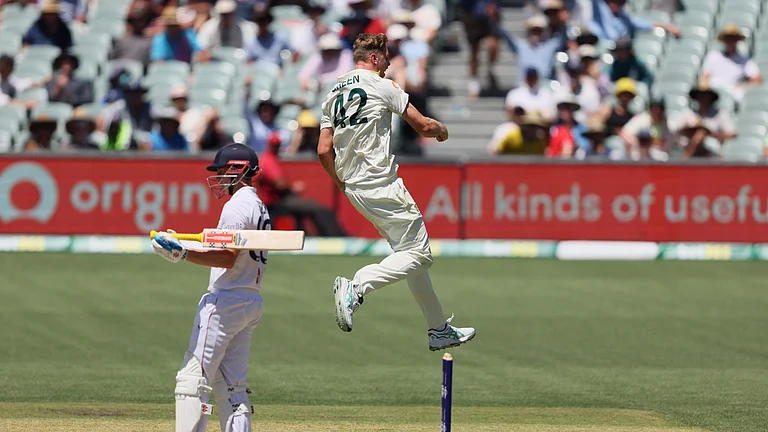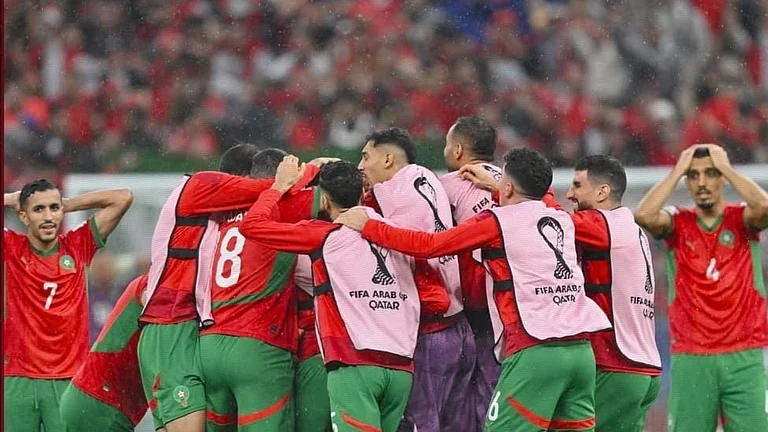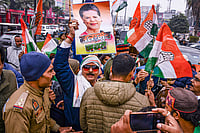In lore and legend, Monyul is the ‘lower region’, the land that extends southward from the Tibetan plateau and across the crests of the Himalayan mountain ranges into India. The Himalayas are a consequence of dramatic tectonic movement over millions of years. The disintegration of Gondwanaland, the mother continent, began recently, a mere hundred and fifty million years ago. A piece broke away to embark northwards, moving inexorably to a collision with the landmass of Asia. This was to become the Indian subcontinent, its northern borders delineated by the fabled mountain range. Deriving their name from the Sanskrit ‘him-alaya’, the abode of snow, the mountains are a young formation, still pushing upward, outward and northward at a geological gallop measured in centimetres. They have long been perceived as a natural barrier, bulwarks against ingress from the north, protectors of India and a way of life. Yet, the Himalayas were not impenetrable – not to pilgrims, travellers, merchants, explorers and scholars, not even to migrating populations. Not so long ago, pathways and tracks enabled the exchange of culture and goods.
They no longer do so, as borders have become rigid and closed. Centuries-old cultural, religious and political bonds were severed with the tumultuous events of the mid-twentieth century in Tibet. The fourteenth Dalai Lama found refuge in India; with a closeknit group of followers, he entered Monyul through Khenzimane on India’s northern border. Nearly three centuries before that, a boy from a village near Tawang had crossed the Himalayas in the reverse direction at Bum La. He was on his way to Lhasa for enthronement as the sixth Dalai Lama. In only a few decades, much has altered.
The lives of the Monpas have been transformed irrevocably. A relatively insular society has been thrown open by the winds of change, by connection with the outside world, people and cultures. Technology, communication, road networks have all made it easier. Some features have been unvarying: the adherence to the faith, the importance of the lamas, the venerated Buddhist monks, and their role in matters big and small, the enthusiasm with which festivals are celebrated. The community still gets together, sometimes for days, in celebration of religious occasions and for every event in the journey of birth, life, marriage and death. Festivals are occasions for gaiety and colour, each village seeking to outdo the other in the vibrancy of the attire and the dances. The people’s clothes, shawls, shoulder bags, dresses and jackets, necklaces and earrings are vibrant.
Women wear shingkas, elegant pink-and-white striped gowns, traditionally stitched from the madderdyed cloth woven on a backstrap loom. From the same looms emerge distinctive Monpa bags, in five or more colours. Men are resplendent in black or red wool jackets, resonant and rich. All through the year, through changing seasons, altitude and terrain, nature is at work with her palette, shifting colour and hue, tint and tinge. Change comes gradually, over the last weeks of spring, or when autumn begins to turn into winter. Sometimes landscapes look dramatically different overnight, just after the first showers arrive or when snowfall blankets the earth.
The landscape is fascinating, the diversity of flora enthralling, but it is the Monpas who have attracted me most to the region. Over time, I have forged bonds of familiarity and friendship, and begun to comprehend the layers and nuances of their lives and relationships. I found them to be delightful people, who may lapse into moody philosophical discourse, then break the sombreness with laughter. Soft-spoken and gentle, deferential to elders and the learned, they were unfailingly hospitable to me.

A visit to a Monpa family, whether to an imposing stone structure or to a herder’s hut, was incomplete without the partaking of rice (or millet or barley, even maize) beer, or of yak butter tea (sweetened and milky for plains-people). And laughter. Well over two-thirds of the Monpas live in Arunachal Pradesh, in a contiguous belt in the upper Himalayas. A fifth live to the north, in Tibet, with whom there are fewer and fading links.
A significant cluster reside in eastern Bhutan, with enduring ties to their Indian brethren. Most are Buddhists of the Mahayana school, following the traditions of the ‘yellow hat’ Geluk school founded by Tibetan philosopher Tsongkhapa, or those of the ‘red hat’ Nyingma school established by Guru Padmasambhava. Some are adherents of pre-Buddhist Bon traditions. Monpas are gently protective and proud of their faith. There are differences amongst the Monpas – of dialect, in dress, in food and drink. These are outweighed by the commonalities; there is, overall, a Monpa way of life. The spread of education and opportunity has altered old rhythms. Horizons have widened and aspirations enlarged. New ways of doing tasks have emerged. Technology has wrought change in their lives and livelihoods. The ubiquitous mobile phone has enabled unprecedented connection; the network of cell phone towers has marred attractive landscapes. Motor vehicles and motorcyclists move along roads that are still challenging, terrain and topography that is demanding.
Scarred hillsides testify to frenetic road-building, weatherbeaten maintenance crews to the difficulties of upkeep. Some travellers come to Monyul in search of employment, others are tourists and trekkers. Visitors and sightseers rarely stay long; workers do, melting occasionally into the population. It is the women who keep the graceful and colourful Monpa traditions of dress alive, not just on special occasions but as functional, everyday attire too. At community events and festivals, or to honour a visiting dignitary, men also emerge in their formals and finery of striking maroon or black jackets.
Monpa matriarchs in the Dirang valley of the Kameng region wear the traditional pinkishmaroon shingka and jacket (tudong). The lhembas, the red cloaks, are of sheep wool, warm in winter and very useful when it rains. The necklaces are of coral and turquoise, with Tibetan black-and-white stone dzi beads, which are believed to protect the wearer, and miniature dorjes, representing the ritual weapon with two ribbed spherical heads. The dorje, or vajra, symbolizes the indestructibility of a diamond and the irresistible force of a thunderbolt.
While the attire is similar, the caps are different. Above is a new, knitted and vividly red woollen cap. It may have been sourced from the market; the yarn almost certainly has been. The silk and brocade cap on the facing page is of Tibetan origin, probably at least sixty years old.
Excerpt from Monpas: Buddhists of the High Himalayas by Vinay Sheel Oberoi, published by Roli Books. The book is available on the Amazon India website.
About the author: Vinay Sheel Oberoi was a former civil servant who served as Secretary, Higher Education in the Government of India and Ambassador and Permanent Representative to UNESCO in Paris. In 1979, he joined the Indian Administrative Service and was assigned to the Assam-Meghalaya cadre. His field postings in Assam were in proximity to the Manas National Park and the Brahmaputra river, and in Meghalaya, to the verdant Khasi hills. In the late nineties he made several visits to the Siang valley in Arunachal Pradesh, and produced In The Forest Hangs A Bridge (1999), a film about the Adi tribe coming together to build a traditional cane and bamboo bridge. The film went on to win the National Award for the best documentary film of the year. His affinity for the North-east of India and its people remained undiminished throughout his life. He passed away in April 2020 after signing off on Monpas, a tribute to the people of the region.





















